Showing Spotlights 489 - 496 of 2779 in category All (newest first):
 Nanofluidic membranes based on two-dimensional materials are promising materials for next-generation water desalination and purification. For instance, pristine and chemically modified graphene oxide membranes (GOMs) effectively block organic dyes and nanoparticles as small as 9 �. However, these nanomembranes fail to exclude smaller inorganic salt ions, which would be required to extract pure potable water from unconventional water sources such as, salt water, industrial waste water, and rain water. With a novel approach called planar heterogeneous interface desalination researchers can now achieve a high salt rejection rate close to 97%.
Nanofluidic membranes based on two-dimensional materials are promising materials for next-generation water desalination and purification. For instance, pristine and chemically modified graphene oxide membranes (GOMs) effectively block organic dyes and nanoparticles as small as 9 �. However, these nanomembranes fail to exclude smaller inorganic salt ions, which would be required to extract pure potable water from unconventional water sources such as, salt water, industrial waste water, and rain water. With a novel approach called planar heterogeneous interface desalination researchers can now achieve a high salt rejection rate close to 97%.
Mar 3rd, 2020
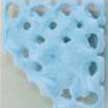 Metal-organic frameworks (MOFs) rank among the best materials for catalysis, gas storage and gas storage and processing. So far, more than 20 000 different MOFs have been fabricated and characterized. A crucial issue for designing MOF-based solids is about finding the best comprise between the material's porosity and its mechanical resistance in relation to a specific application. To do that, researchers have developed a modified 3D printer for the controlled deposition of inks, formulated from different MOF powders. This robocasting provides perfect control on the size and morphology of the final solid.
Metal-organic frameworks (MOFs) rank among the best materials for catalysis, gas storage and gas storage and processing. So far, more than 20 000 different MOFs have been fabricated and characterized. A crucial issue for designing MOF-based solids is about finding the best comprise between the material's porosity and its mechanical resistance in relation to a specific application. To do that, researchers have developed a modified 3D printer for the controlled deposition of inks, formulated from different MOF powders. This robocasting provides perfect control on the size and morphology of the final solid.
Feb 26th, 2020
 The foremost atom of the tip in a scanning probe microscope is critically important for precise imaging results. In atomic force microscopy, the front atom significantly affects atomic-scale contrast and atom manipulation. The chemical species is a dominant factor in determining the tip state, and in situ chemical identification of a tip apex remains a challenging task. Researchers found that Pauling's equation is applicable to the analysis of tip apex atoms. The team also demonstrated a way to determine electronegativity of surface atoms solely by experiments.
The foremost atom of the tip in a scanning probe microscope is critically important for precise imaging results. In atomic force microscopy, the front atom significantly affects atomic-scale contrast and atom manipulation. The chemical species is a dominant factor in determining the tip state, and in situ chemical identification of a tip apex remains a challenging task. Researchers found that Pauling's equation is applicable to the analysis of tip apex atoms. The team also demonstrated a way to determine electronegativity of surface atoms solely by experiments.
Feb 21st, 2020
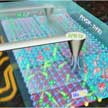 Two-dimensional (2D) materials could offer new building blocks for future technologies, but this requires approaches to control the carrier type in 2D semiconductors. A number of pioneering works have demonstrated different methods to program the carrier type in 2D materials, such as electrostatic doping, chemical doping, ion implantation, charge transfer, and annealing control. Recently, a team of researchers have developed a technique to dope 2D materials for redefinable nanoelectronics using nonvolatile ferroelectric domains.
Two-dimensional (2D) materials could offer new building blocks for future technologies, but this requires approaches to control the carrier type in 2D semiconductors. A number of pioneering works have demonstrated different methods to program the carrier type in 2D materials, such as electrostatic doping, chemical doping, ion implantation, charge transfer, and annealing control. Recently, a team of researchers have developed a technique to dope 2D materials for redefinable nanoelectronics using nonvolatile ferroelectric domains.
Feb 20th, 2020
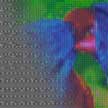 Similar to the way painters mix different hues and tones of colors on their palette, researchers demonstrated a method for continuous mixing of different structural colors at the nanoscale on a single pixel. This novel method for structurally generating and mixing vivid colors additively is based on interleaved rectangular lattices of metallic nanoparticles. This coloring approach offers a large individual control over the chromaticity and luminance of the generated colors.
Similar to the way painters mix different hues and tones of colors on their palette, researchers demonstrated a method for continuous mixing of different structural colors at the nanoscale on a single pixel. This novel method for structurally generating and mixing vivid colors additively is based on interleaved rectangular lattices of metallic nanoparticles. This coloring approach offers a large individual control over the chromaticity and luminance of the generated colors.
Feb 18th, 2020
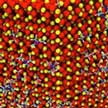 Hematite as a magnetic photocatalyst can support the production of oxygen in its magnetic ground state and thereby improve the efficiency of hydrogen production. When hematite is made thinner, another important improvement in the efficiency of the reaction could be accomplished by expectedly more efficient separation of charge carriers upon the absorption of light on the surface. Scientists now elucidate exactly how optical and magnetic properties of hematite change when decreased in thickness to the atomistic scale.
Hematite as a magnetic photocatalyst can support the production of oxygen in its magnetic ground state and thereby improve the efficiency of hydrogen production. When hematite is made thinner, another important improvement in the efficiency of the reaction could be accomplished by expectedly more efficient separation of charge carriers upon the absorption of light on the surface. Scientists now elucidate exactly how optical and magnetic properties of hematite change when decreased in thickness to the atomistic scale.
Feb 14th, 2020
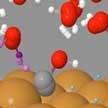 Oxygen reduction reaction (ORR), oxygen evolution reaction (OER), and hydrogen evolution reaction (HER) are among the core electrochemical processes in clean energy conversion and storage devices, such as metal-air batteries, water electrolyzers, and fuel cells. Single-atom catalysts have emerged as a new frontier of heterogeneous catalysts for these reactions due to their highly increased coverage of active sites, enhanced catalytic performance, and maximal metal utilization. By using machine learning algorithms, researchers provide a new paradigm for directly predicting the catalytic performance from physical properties of catalyst candidates.
Oxygen reduction reaction (ORR), oxygen evolution reaction (OER), and hydrogen evolution reaction (HER) are among the core electrochemical processes in clean energy conversion and storage devices, such as metal-air batteries, water electrolyzers, and fuel cells. Single-atom catalysts have emerged as a new frontier of heterogeneous catalysts for these reactions due to their highly increased coverage of active sites, enhanced catalytic performance, and maximal metal utilization. By using machine learning algorithms, researchers provide a new paradigm for directly predicting the catalytic performance from physical properties of catalyst candidates.
Feb 13th, 2020
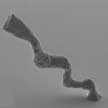 Organic-inorganic metal halide perovskites have emerged as a promising optoelectronic material with exceptional structure and property tunability. This new generation of functional materials possess excellent properties such as large optical absorption, long carrier diffusion length, high carrier mobility, and low-cost solution production process. Fabrication methods based on inkjet printing emerged for patterning such perovskite micro- and nanostructures. However, these patterning techniques for perovskites are still limited to in-plane fabrication and alignment. To overcome this limitation, researchers have developed a method to print perovskite nanostructures in three dimensions.
Organic-inorganic metal halide perovskites have emerged as a promising optoelectronic material with exceptional structure and property tunability. This new generation of functional materials possess excellent properties such as large optical absorption, long carrier diffusion length, high carrier mobility, and low-cost solution production process. Fabrication methods based on inkjet printing emerged for patterning such perovskite micro- and nanostructures. However, these patterning techniques for perovskites are still limited to in-plane fabrication and alignment. To overcome this limitation, researchers have developed a method to print perovskite nanostructures in three dimensions.
Feb 11th, 2020
 Nanofluidic membranes based on two-dimensional materials are promising materials for next-generation water desalination and purification. For instance, pristine and chemically modified graphene oxide membranes (GOMs) effectively block organic dyes and nanoparticles as small as 9 �. However, these nanomembranes fail to exclude smaller inorganic salt ions, which would be required to extract pure potable water from unconventional water sources such as, salt water, industrial waste water, and rain water. With a novel approach called planar heterogeneous interface desalination researchers can now achieve a high salt rejection rate close to 97%.
Nanofluidic membranes based on two-dimensional materials are promising materials for next-generation water desalination and purification. For instance, pristine and chemically modified graphene oxide membranes (GOMs) effectively block organic dyes and nanoparticles as small as 9 �. However, these nanomembranes fail to exclude smaller inorganic salt ions, which would be required to extract pure potable water from unconventional water sources such as, salt water, industrial waste water, and rain water. With a novel approach called planar heterogeneous interface desalination researchers can now achieve a high salt rejection rate close to 97%.
 Subscribe to our Nanotechnology Spotlight feed
Subscribe to our Nanotechnology Spotlight feed





